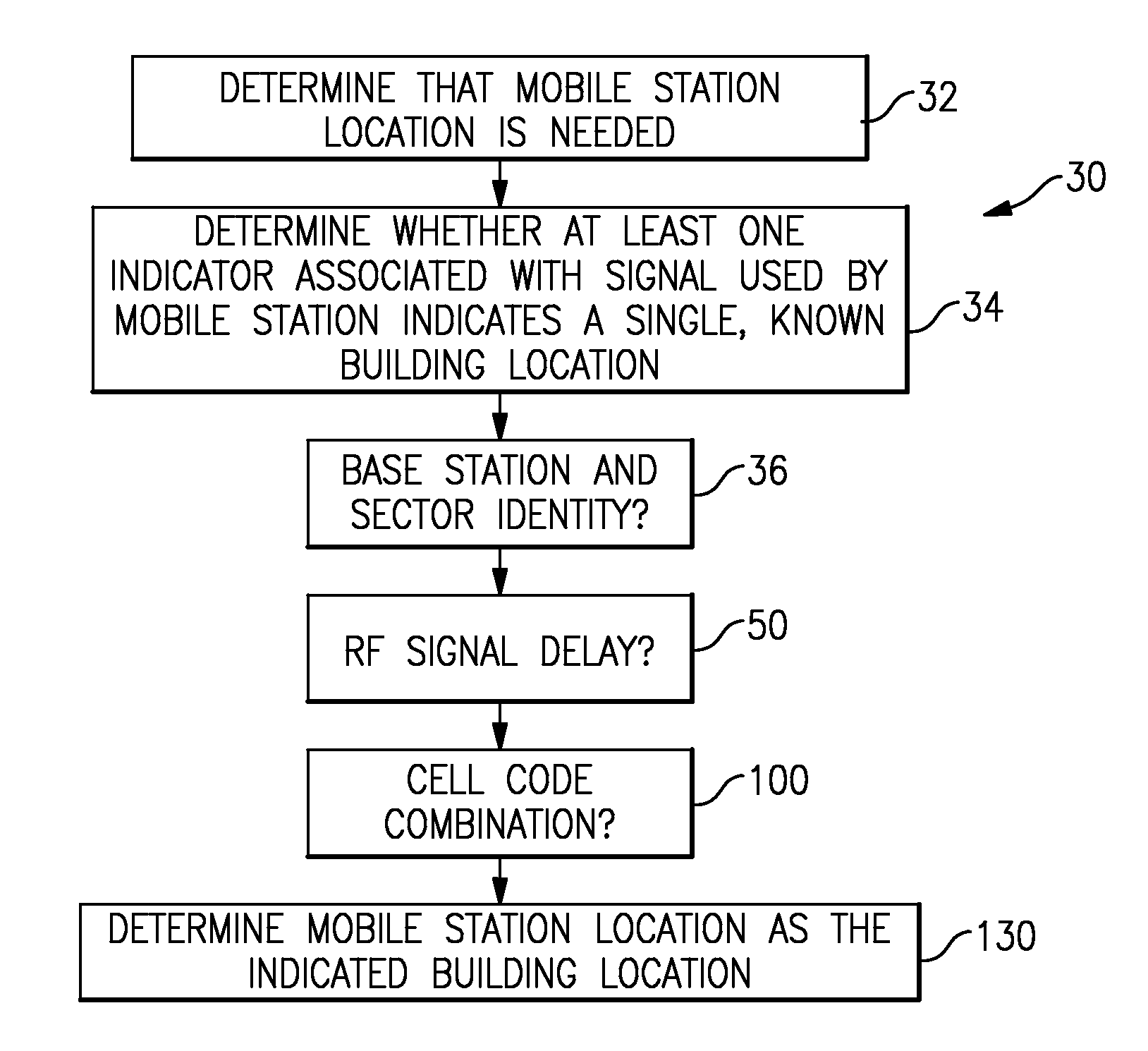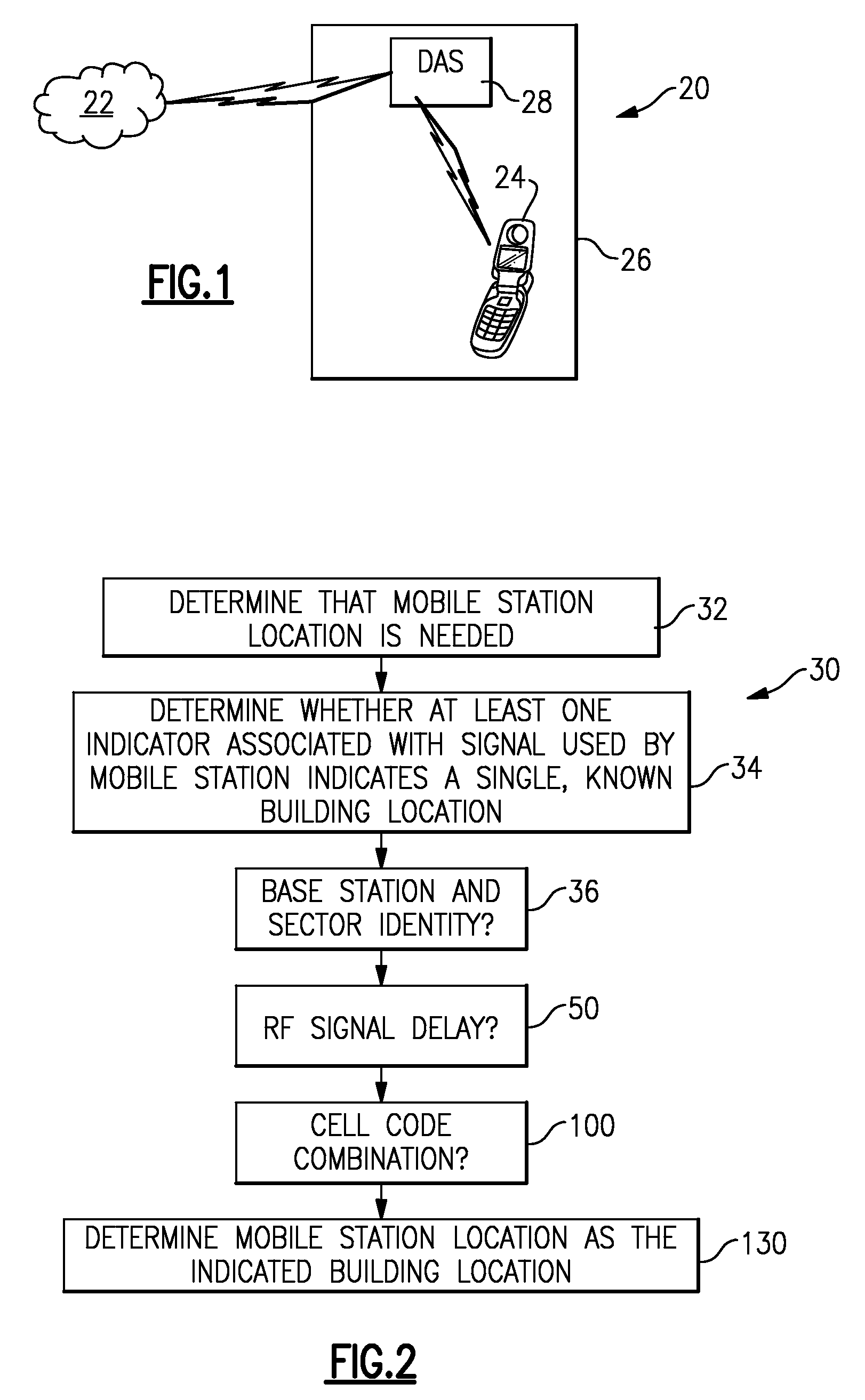Locating a mobile station inside a building
a mobile station and building technology, applied in the field of communication, can solve the problems of inability to respond to emergency request calls, ineffective macrocell triangulation, and inability to perform macrocell triangulation
- Summary
- Abstract
- Description
- Claims
- Application Information
AI Technical Summary
Problems solved by technology
Method used
Image
Examples
Embodiment Construction
[0023]The following disclosed examples allow for locating a mobile station even when that mobile station is within a building such that traditional triangulation-based location techniques will not work. The disclosed examples facilitate locating a mobile station even when the mobile station is within a building where GPS triangulation methods are not possible because the mobile station cannot detect GPS satellite signals, for example. The disclosed examples provide a low cost, diverse and flexible approach to facilitating locating a mobile station for a variety of purposes including responding to an emergency call placed from a mobile station.
[0024]FIG. 1 schematically illustrates a wireless communication arrangement 20 including a wireless communication network 22 that operates in a generally known manner. A mobile station 24 is used to place a call from within a building 26. In this example, the mobile station 24 communicates through a distributed antenna system (DAS) 28 that prov...
PUM
 Login to View More
Login to View More Abstract
Description
Claims
Application Information
 Login to View More
Login to View More - R&D
- Intellectual Property
- Life Sciences
- Materials
- Tech Scout
- Unparalleled Data Quality
- Higher Quality Content
- 60% Fewer Hallucinations
Browse by: Latest US Patents, China's latest patents, Technical Efficacy Thesaurus, Application Domain, Technology Topic, Popular Technical Reports.
© 2025 PatSnap. All rights reserved.Legal|Privacy policy|Modern Slavery Act Transparency Statement|Sitemap|About US| Contact US: help@patsnap.com



